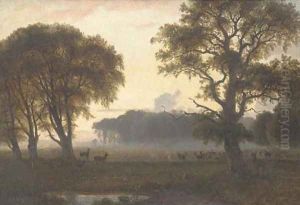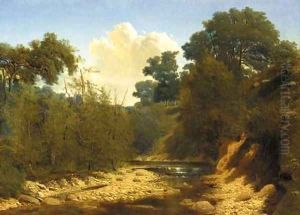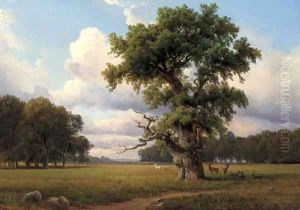Nordahl Grove Paintings
Nordahl Grove was a Danish painter born on February 22, 1859, in Stavanger, Norway. He is often associated with the Danish Golden Age, a period of exceptional creative production in Denmark during the first half of the 19th century, although he was active slightly later than the period's most prominent figures. Grove was particularly known for his landscape paintings, which frequently depicted the serene and picturesque countryside of Denmark, capturing the unique Nordic light and atmosphere.
Educated at the Royal Danish Academy of Fine Arts in Copenhagen, Grove studied under influential figures such as Peder Severin Krøyer, one of the most notable members of the Skagen Painters, a group of Scandinavian artists who gathered each summer in the north of Denmark. These connections allowed Grove to immerse himself in the rich artistic environment of his time, which greatly influenced his style and subject matter.
Throughout his career, Grove remained dedicated to the naturalist approach to painting, frequently working en plein air (outdoors) long before the Impressionists popularized the practice. He sought to convey the beauty of the Danish landscape in his work, often focusing on the changing qualities of light and season. His use of color was subtle yet evocative, aiming to reflect the true tones of the natural world.
Grove's work was well received in his time, and he exhibited frequently at the Charlottenborg Spring Exhibition, an important venue for contemporary Danish artists. His paintings are characterized by their tranquil and idyllic qualities, inviting viewers to reflect on the peaceful aspects of rural life. Despite the relative obscurity of Grove in the broader context of European art history, his contributions remain significant within the Danish national heritage.
Nordahl Grove died on November 13, 1923, in Frederiksberg, Denmark. After his death, his work continued to be appreciated by collectors and art enthusiasts, particularly within Scandinavia. His paintings can be found in various museums and private collections, where they continue to be celebrated for their quiet beauty and testament to the Danish landscape.


